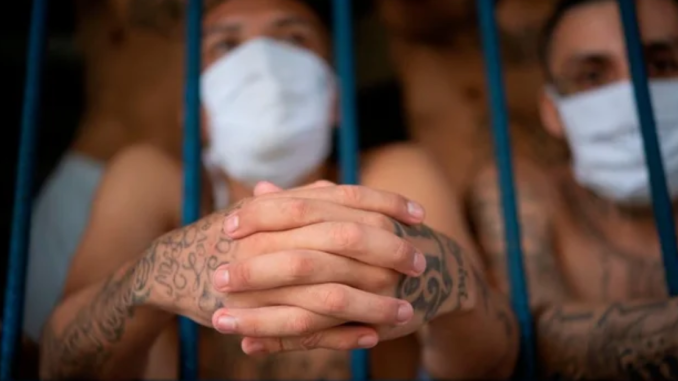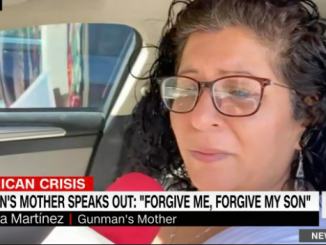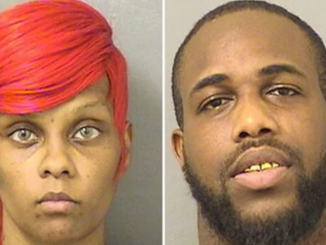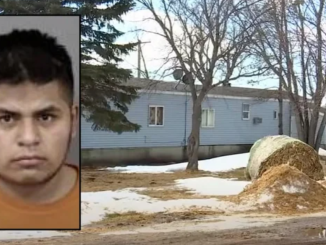
The mythology of the street gang is rooted in American popular culture, from West Side Story to The Warriors to Training Day.
But a recent trial in the seemingly endless suburban landscape of Long Island, New York, has thrown a spotlight on the harsh reality of gang activity, and the circumstances in which it flourishes. In particular, one of the most brutal organizations at work in the US: Mara Salvatrucha, or MS-13.
The details of the trial are horrific. Leniz Escobar, also known as “La Diablita”, is a 22-year-old woman accused of luring five teenagers to a Long Island park in 2017 to smoke marijuana – where they were then ambushed. Four of the five young men – Jorge Tigre, 18; Michael Lopez, 20; Jefferson Villalobos, 18; and Justin Llivicura, 16 – were hacked to death by more than a dozen members of MS-13, a street gang with its roots in El Salvador’s civil war of the 80s and 90s.
The brutal murders at the center of the case made headlines in 2017 when MS-13 was identified just 100 days into the new administration by Donald Trump and his attorney general, Jeff Sessions, giving the US public identifiable “bad hombres” of Trump’s often racist fear-the-outsider narrative.
US accuses El Salvador of secretly negotiating truce with gang leaders
Read more
John Kelly, then Trump’s secretary of homeland security, described MS-13’s supposed role in smuggling immigrants into the US as “a course north that rivals Dante’s journey into hell”.
According to government prosecutors, Escobar helped orchestrate “a horrific frenzy of violence” involving machetes, knives and a chisel, before falsely claiming to be a victim in the ambush. Escobar, aged 17 at the time of the murders and now being tried as an adult, was seeking to curry favor with MS-13 and had alerted its members to the victims’ location, prosecutors say.
Escobar has pleaded not guilty to racketeering charges.
MS-13, prosecutors allege, had been seeking to settle a score, and believed the victims to be members of the rival 18th Street gang – and that the killings had been “pre-authorized” by gang leadership. The victims’ families have denied that any of the men killed were part of a gang.
Escobar, prosecutors further claim, tossed her cellphone from a moving vehicle, destroyed its sim card, and discarded her bloodied clothing. Soon after the killings, they allege, she told her high-ranking MS-13 boyfriend, Jeffrey Amador, whose gang name was “Cruel”, that “four individuals took the train”, that they were “seeing the light” and “never coming back”.
Escobar’s attorney, Keith White, said her comments were not evidence of guilt and that she did not know anyone would be killed at the park that night. “These are not confessions. These are pivots – pivots from a teenage girl who knew she was in danger,” White said.
Elmer Alexander Artiaga-Ruiz, the lone survivor of the attack, testified that he escaped by running and jumping a fence after MS-13 gang members surrounded them.
Artiaga-Ruiz, 22, had made the hand signs of MS-13 and its rival 18th Street gang in photos that he posted on social media, which Escobar saw and reported to the gang. Artiaga-Ruiz was not a gang member, prosecutors said, but a teenager also attempting to gain respect and attention.
But the murders do shed light on MS-13 and other Central American gangs that have established themselves in parts of the US and reportedly in Europe.
According to the US justice department, which describes combating MS-13 as a “top priority”, the group is a “complex phenomenon” that is “a social organization first, and a criminal organization second” and draws on a “complex notion of community”.
“The gang is not about generating revenue as much as it is about creating a collective identity that is constructed and reinforced by shared, often criminal experiences, especially acts of violence and expressions of social control,” the report stated.
Separately, in October last year, the department released “Full Scale Response: a Report on the Department’s Efforts to Combat MS-13 from 2016-2020”, which said it had prosecuted approximately 749 MS-13 gang members since 2016 using more than 20 federal criminal statutes, including terrorism charges.
Notwithstanding MS-13’s tendency toward terrifying acts of violence, the separate political and criminal justice interpretations of the group presents an “enigma”, said David Pyrooz, a professor of sociology at the University of Colorado Boulder, who considers the Long Island murders as an outlier.
“It’s very different to your typical drive-by or walk-up shooting, or spraying into a group of people. It’s personal. You use knives when it’s personal, guns when it’s impersonal,” he points out. “And that’s why it is attracting this level of attention.”
Part of the anxiety around MS-13, Pyrooz said, is the role it plays in Central American countries, as form of criminal governance and its unusual transnational character.
“Most gangs are indigenous to communities, and they don’t migrate,” he says. “But it’s important to remember that MS-13 are one of 30,000 gangs in the US, and their violence, though extreme, is a drop in the bucket of all the gang violence that occurs in the country.”
Fears that MS-13 is involved in drug and people smuggling, though it may be in peripheral terms, is not its central business, which, like other gangs, is largely opportunistic. “They engage in a ‘cafeteria’ style of offending. They don’t really specialize – they commit property crimes, violent crimes, they do all types.”
But what makes MS-13 stand out is its propensity for extreme violence.
“It commands the attention of media and people like President Trump, because typical gang violence doesn’t involve hacking people up and beheadings,” Pyrooz said. “The imagery of the group has taken on this epic proportion that far outweighs the level of threat they pose to communities in general, though not in the communities where they are active.”
By rational extension, that violence is self-protective in the sense that other gangs, or indeed law enforcement, will avoid confrontation. But it also comes with the potential for mimicry, in which other groups take on MS-13 symbolism and violent mannerisms because it could be protective.
Which may be what the teens murdered on Long Island may, tragically, have been seeking to portray. But this, Pyrooz said, is not a message to the broader public. “It’s a message to their equals in age, race, ethnicity, gender and social status. MS-13 doesn’t get any benefit from targeting a 70-year-old grandmother. Perpetrators tend to be the social equal of the victims,” Pyrooz said.
In fact, the public perception of gangs as a major law-enforcement threat are hard to pin down in reality.
As gang activity has expanded throughout the country, emerging in the suburbs and even rural towns, US authorities actually have scant information about their range and effect. According to the most recent estimates from the National Gang Center, there are about 31,000 gangs and 850,000 gang members. But those figures date from 2012, when the taskforce was disbanded.
Many of those outfits and members, though, are likely to be relatively dormant, and gang violence is almost exclusively within the communities in which they emerge. “Latino gangs fight other Latino gangs even in areas where it’s predominantly Black, and Black gangs fight other Black gangs in predominantly Latino areas,” Pyrooz said.
Nor does the Hollywood trope of “once a gang member, always a gang member” stand up. The average length of membership may no more than two years and involves long periods of inactivity. As Malcolm Klein wrote in The American Street Gang: Its Nature, Prevalence, and Control: “For the most part, gang members do very little – sleep, get up late, hang around, brag a lot, eat again, drink, hang out some more. It’s a boring life.”
Still, no other gang has obtained the elevated status of MS-13. Thanks to Trump’s comments, no other gang has been so etched in the memory of criminal justice and the general populace.
“To get that call-out was so beneficial for the group’s reputation and status,” he said. “You’d have to go back to the Chicago outfit of Italian organized crime to see the level of attention that’s been afforded to them.”
*story by The Guardian


